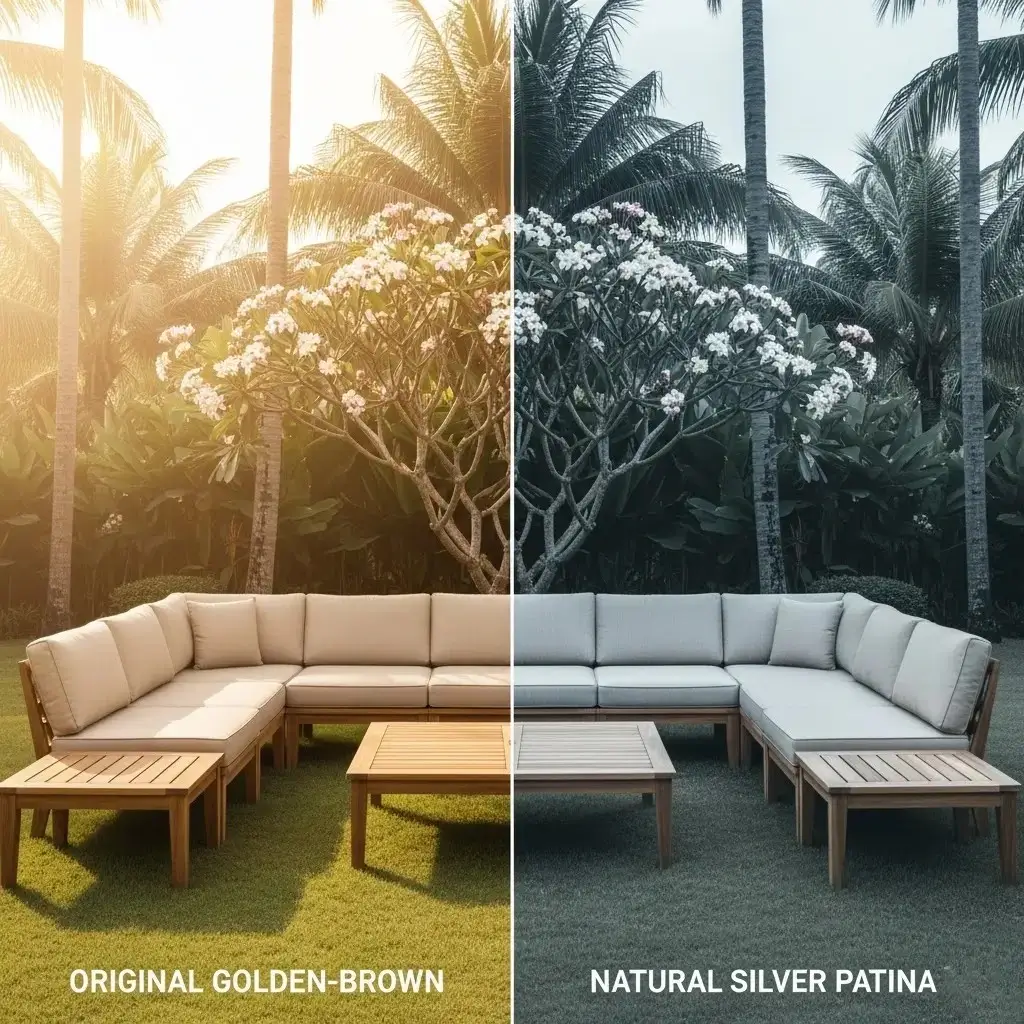What are the Disadvantages of Teak Furniture? An Honest Look
At TeakVogue, we are passionate about solid teak furniture. We believe it’s one of the best investments you can make for your home, especially in the Malaysian climate. But, like anything of quality, it’s not without its specific characteristics that some might perceive as “disadvantages.”
We believe in transparency. Let’s take an honest look at the common downsides people associate with teak and explain why, in many cases, these actually highlight teak’s greatest strengths.
1. “It’s Expensive.” (The Price Factor)
This is by far the most common “disadvantage” people mention. Yes, solid teak furniture, especially Grade-A Indonesian teak like ours, has a higher upfront cost than furniture made from pine, rubberwood, or veneered particle board.
Our Honest Take: Is it expensive, or is it an investment? The price of teak reflects its unparalleled quality, durability, and natural properties.
Longevity: Teak furniture is famous for lasting for generations, even centuries. When you buy a teak dining table, you’re not buying it for 5-10 years; you’re buying it for 50-100+ years. Divide the cost by its lifespan, and it becomes incredibly economical.
Zero Replacement Costs: Unlike cheaper furniture that warps, cracks, or rots in Malaysian humidity, requiring frequent replacement, teak holds up. You buy it once.
Natural Resources: High-quality teak comes from sustainably managed plantations, where trees take decades to mature. This natural resource contributes to its value.
TeakVogue’s Advantage: As a factory-direct manufacturer, we eliminate middlemen markups. This means you get genuine, Grade-A solid teak at the fairest possible price, making your long-term investment even smarter.
2. “It Changes Colour.” (The Patina Effect)
Many people love the golden-brown hue of new teak. But when left outdoors, teak will naturally weather to a soft, silvery-grey patina. Some see this colour change as a disadvantage.
Our Honest Take: This is teak’s superpower, not a flaw. The patina is a natural protective layer that teak develops when exposed to UV light and rain. It is a sign of authentic, high-quality teak adapting to its environment.
Protection: The patina doesn’t damage the wood; it protects it from harsh sun and rain, making it even more resilient.
Aesthetic Appeal: This silvery-grey tone is highly prized in high-end design for its sophisticated, weathered look. It gives your outdoor space a timeless, elegant character.
Choice: If you prefer the golden look, you can maintain it with regular application of a teak sealer. The choice is yours, but the natural patina requires almost zero maintenance.
3. “It’s Heavy.” (The Density Factor)
Solid teak is dense, making it heavier than furniture made from lighter woods or synthetic materials. For some, this might seem like a disadvantage if they frequently rearrange their furniture.
Our Honest Take: Weight equals stability and durability. The density of teak is a direct indicator of its strength and resilience.
Stability: Heavy furniture is stable furniture. Your teak dining table won’t wobble, and your outdoor sofa won’t easily shift in strong winds.
Durability: The dense grain is what makes teak so resistant to impact, wear, and environmental stresses. It means your furniture is solid, not hollow or flimsy.
Quality Indicator: Light “teak-looking” furniture is often made of inferior wood with just a teak-coloured stain. True solid teak has a substantial feel.
4. “It Needs Occasional Cleaning/Maintenance.” (The “Not Zero” Maintenance Factor)
While often touted as “low maintenance,” teak isn’t “no maintenance.” It still benefits from occasional cleaning, especially outdoors, to remove dirt or mildew.
Our Honest Take: Simple care ensures a lifetime of beauty. Compared to other woods that require constant sealing, painting, or covering to survive Malaysian weather, teak’s maintenance is minimal.
Indoors: A simple wipe with a damp cloth is usually all it needs. No oiling necessary.
Outdoors: A light wash with soapy water once or twice a year is sufficient to keep the patina clean. If maintaining the golden colour, a teak sealer application is needed, but this is still far less demanding than caring for other outdoor materials.
The TeakVogue Conclusion: Advantages Outweigh “Disadvantages”
When you look closely at the “disadvantages” of teak furniture, they almost always reveal its greatest strengths: its durability, longevity, natural beauty, and resilience in challenging climates.
For Malaysian homeowners, these perceived downsides are precisely why teak is such a superior investment. It’s furniture that truly lasts, looks magnificent, and offers exceptional value over its lifetime.ificent, and offers exceptional value over its lifetime.

